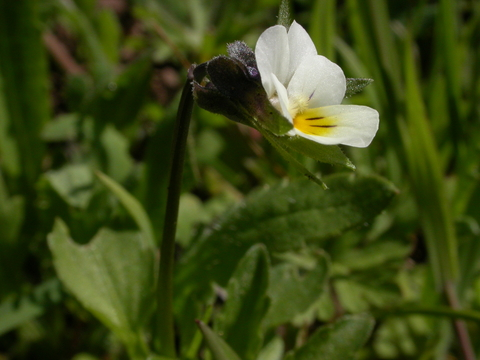Field Pansy's Evolution | 28 Dec 2023
Why in News?
Recently, scientists have uncovered evidence of rapid evolution in a flowering plant found in Paris, France. The plant, identified as Field Pansy (Viola arvensis) is showing signs of self-pollination, a behaviour contradicting the conventional reliance on external pollinators.
What are the Key Facts about Field Pansy?
- The Field Pansy (Viola arvensis), is a common wildflower that can be found in many parts of Europe, Asia, and North America.
- It belongs to the group of plants called angiosperms, which produce seeds inside a protective structure called a fruit.
- Angiosperms rely on insects and other animals to pollinate them and help them reproduce.
Pollination
- Pollination is the process by which pollen grains, which contain the male reproductive cells of plants, are transferred from one flower to another, usually by insects that visit the flowers for nectar.
- Nectar is a sugary liquid that plants produce to attract pollinators.
- Pollination is essential for the genetic diversity and survival of many plant species, and it has evolved over 100 million years of coevolution between plants and animals.
- Pollination is carried through pollinators(vectors that move pollen within the flower and from flower to flower).
- However, some plants can also pollinate themselves, without the help of any external agent. This is called self-pollination, and it is a way for plants to ensure their reproduction in case there are no suitable pollinators around.
- Self-pollination can also save energy and resources for plants, as they do not need to produce as much nectar and flowers to attract pollinators.
What are the Key Highlights of the Study?
- Rapid Evolution:
- The study marks the first evidence of rapid evolution in plants, with the field pansy, showing significant changes in nectar production and flower size over a relatively short period.
- The study found that flowers of the wild pansy variety produced 20% less nectar and were 10% smaller.
- The study marks the first evidence of rapid evolution in plants, with the field pansy, showing significant changes in nectar production and flower size over a relatively short period.
- Self-Pollination:
- The field pansy has evolved to self-pollinate, reducing its reliance on pollinators due to a decreasing availability of insects.
- This behaviour is contrary to the conventional reliance on insects for pollination in angiosperms, marking a significant departure from established plant reproductive strategies.
- The field pansy has evolved to self-pollinate, reducing its reliance on pollinators due to a decreasing availability of insects.
- Convergent Evolution:
- The study reveals convergent evolution across populations, with a reduction in rewarding traits and attractiveness to pollinators.
- This convergence suggests a consistent evolutionary response to environmental pressures across different plant populations.
- The study reveals convergent evolution across populations, with a reduction in rewarding traits and attractiveness to pollinators.
- Resurrection Ecology Method:
- The researchers used the "resurrection ecology" method, planting seeds from the 1990s and 2000s against their contemporary descendants from 2021 to observe changes over time.
- This method allowed them to track and compare changes in plant traits and behaviour across different periods.
- The researchers used the "resurrection ecology" method, planting seeds from the 1990s and 2000s against their contemporary descendants from 2021 to observe changes over time.
- Environmental Impact:
- The move towards selfing may benefit plants in the short term but poses a threat to their long-term survival, especially in the face of climate change and other environmental changes.
- Self-pollination reduces the genetic diversity and adaptability of the plant, making it more susceptible to diseases and environmental stresses.
- The move towards selfing may benefit plants in the short term but poses a threat to their long-term survival, especially in the face of climate change and other environmental changes.
- Pollinator Decline:
- The study warns of a potential feedback loop that could lead to further declines in pollinators as a result of plant trait evolution, impacting the plant-pollinator network.
- Urgent Analysis:
- The study emphasizes the need to analyze whether these results are symptomatic of broader behavioral changes in the relationship between angiosperms and their pollinators.
- Researchers call for a thorough understanding of the possibility of reversing the process and breaking the eco-evolutionary-positive feedback loop to preserve plant-pollinator networks.
- The study emphasizes the need to analyze whether these results are symptomatic of broader behavioral changes in the relationship between angiosperms and their pollinators.

